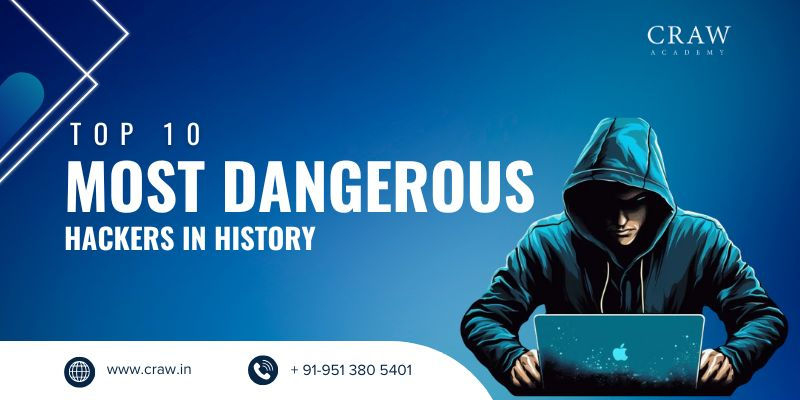Top 10 Most Dangerous Hackers in History
- Manisha Chaudhary
- Oct 29
- 4 min read

Introduction : Top 10 Most Dangerous Hackers in History
The world of cybersecurity is littered with tales of brilliant minds who crossed ethical lines, causing billions in damages, exposing secrets, and reshaping global defenses. These “black-hat” hackers — driven by curiosity, greed, or ideology — have infiltrated governments, corporations, and militaries, proving no system is impenetrable. From the 1980s phone phreaks to modern data breaches, their exploits highlight vulnerabilities that still echo today.
This list ranks the top 10 based on impact, notoriety, and scale of disruption, drawn from historical records and expert analyses. Many later reformed as white-hat consultants, turning destruction into education.
Top 10 Most Dangerous Hackers in History

1. Kevin Mitnick (The Condor)
Kevin Mitnick, active in the 1980s-90s, was the FBI’s most-wanted cybercriminal for hacking giants like Nokia, Motorola, IBM, and Pacific Bell. Using social engineering — tricking people into revealing passwords — he stole proprietary software and evaded capture for years. His 1995 arrest ended a manhunt dramatized in films. Sentenced to five years, Mitnick now runs a security firm. Impact: Exposed early corporate vulnerabilities; estimated damages over $300 million.
2. Albert Gonzalez (Soupnazi)
Gonzalez led the ShadowCrew ring, orchestrating the largest credit card theft ever — stealing 170 million accounts from TJX, Heartland, and Hannaford in 2005–2009. He exploited SQL injection flaws in payment systems, selling data on dark web forums. Arrested in 2008, he got 20 years. Impact: $200+ million in losses; sparked PCI-DSS compliance reforms.
3. Gary McKinnon (Solo)
In 2001–2002, Scottish hacker McKinnon breached 97 U.S. military and NASA systems seeking UFO files. He deleted critical files from the Naval Weapons Station Earle, paralyzing networks post-9/11. Extradition fights lasted a decade; he was never tried. Impact: $700,000+ in damages; highlighted military cyber weaknesses.
4. Adrian Lamo (The Homeless Hacker)
Lamo, a nomadic hacker in the early 2000s, infiltrated The New York Times, Yahoo, and Microsoft via public Wi-Fi. In 2010, he reported Chelsea Manning’s WikiLeaks leaks to authorities, leading to her arrest. Died in 2018. Impact: Breaches exposed media vulnerabilities; his whistleblowing sparked ethics debates.
5. Vladimir Levin
Russian Levin hacked Citibank in 1994, siphoning $10 million via wire transfers to accomplices. Using a dial-up modem, he exploited SWIFT network flaws. Extradited and jailed in 1997. Impact: One of the first major bank heists; led to global financial security overhauls.
6. Jonathan James (c0mrade)
At 15 in 1999, James hacked NASA’s systems, stealing $1.7 million in software source code, forcing a three-week shutdown. First U.S. juvenile cyberprisoner (six months). Died by suicide in 2008 amid unrelated probes. Impact: Proved teen hackers’ threat; influenced juvenile cyber laws.
7. Kevin Poulsen (Dark Dante)
Poulsen, in the 1980s-90s, seized KIIS-FM phone lines to win Porsche giveaways and hacked FBI databases. His 1991 arrest ended a five-year hunt; he served 51 months. Now a Wired editor. Impact: $250,000+ in fraud; pioneered phone phreaking awareness.
8. Robert Tappan Morris (Morris Worm Creator)
In 1988, Cornell grad student Morris unleashed the first major internet worm, infecting 6,000+ machines (10% of the internet). Intended as research, it caused chaos. Fined and probationed. Impact: $96 million in damages; birthed the CERT Coordination Center.
9. Matthew Bevan & Richard Pryce (Datastream Cowboy & Kuji)
In 1996, these British teens hacked U.S. military nets, including Pentagon and North Korean intel gateways, risking global conflict. They accessed via misconfigured modems. Cautioned, not jailed. Impact: Near-diplomatic incident; spurred international cyber treaties.
10. Astra (Unknown Greek Hacker)
From 2002–2006, Astra stole Dassault Group’s military blueprints (e.g., Rafale jet tech) over five years, costing $360 million. Arrested in 2012 via webcam traces. Identity still partially secret. Impact: Largest IP theft; influenced aerospace security protocols.
Why These Hackers Matter Today
Their stories underscore evolving threats — from social tricks to state-sponsored breaches. Many, like Mitnick, now advocate defense, but risks persist. In 2025, with AI amplifying attacks, learning from history is key. For deeper dives, explore cybersecurity courses at institutions like Craw Security, offering ethical hacking diplomas with real-world simulations. Stay vigilant — update software, use MFA, and report anomalies.
Frequently Asked Questions (FAQs)
Q1. Who is considered the most dangerous hacker in history?
Kevin Mitnick is often regarded as the most dangerous hacker due to the scale of his attacks and his ability to exploit both technology and human psychology.
Q2. Did any of these hackers reform and work in cybersecurity?
Yes, several — like Kevin Mitnick, Kevin Poulsen, and Robert Tappan Morris — later became ethical hackers, consultants, and security researchers.
Q3. What was the biggest financial damage caused by a hacker?
Albert Gonzalez’s credit card data theft operation caused losses exceeding $200 million, making it one of the most expensive cybercrimes in history.
Q4. How have these hackers influenced modern cybersecurity?
Their actions led to stronger data protection laws, corporate compliance frameworks (like PCI-DSS), and the growth of ethical hacking as a profession.
Q5. Are hackers still as dangerous today as they were in the past?
Yes — modern hackers use AI, automation, and social engineering on a much larger scale, making today’s threats even more sophisticated.
Conclusion
The chronicles of the world’s most dangerous hackers reveal that technology’s greatest strength — connectivity — can also be its biggest weakness when exploited. From Kevin Mitnick’s legendary social engineering exploits to Albert Gonzalez’s record-breaking data theft and Gary McKinnon’s military breaches, each hacker reshaped how governments and organizations perceive digital risk.
To transform this knowledge into defensive skill, institutions like Craw Security provide hands-on training in ethical hacking, penetration testing, and cyber forensics, empowering the next generation of defenders to outsmart modern threats.




Comments